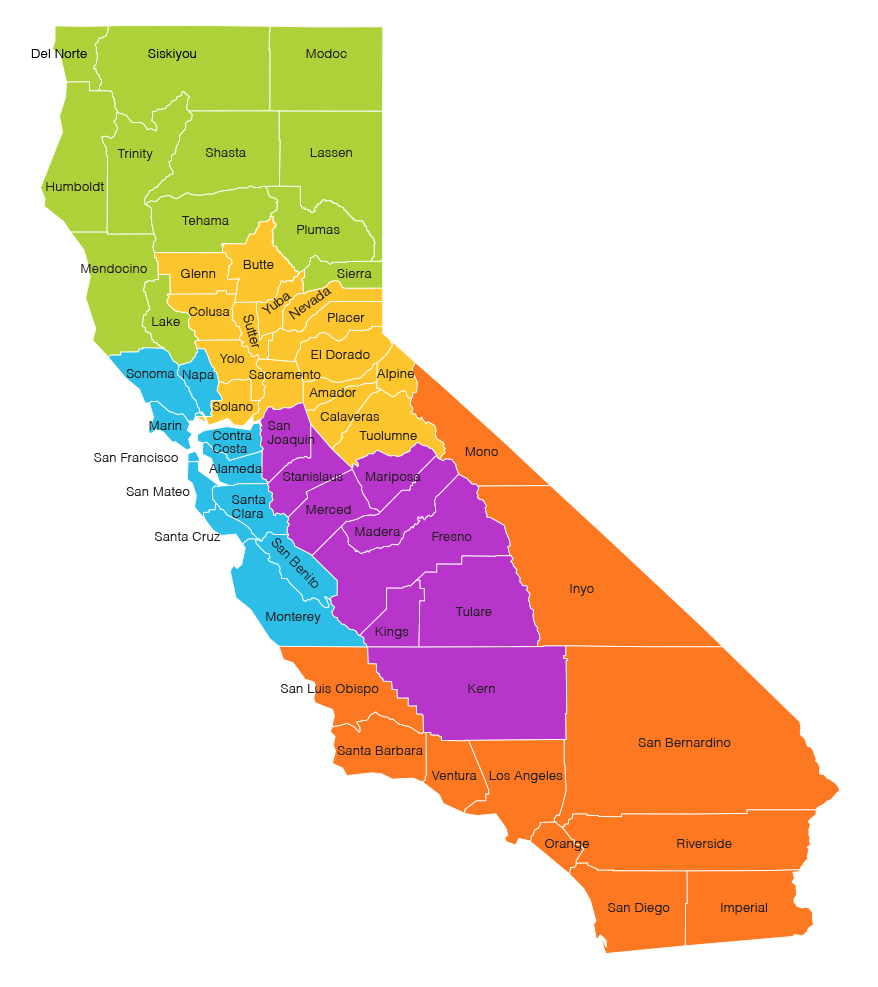How Many Counties Are There in California? Full Breakdown & FAQs
How Many Counties Are There in California? Full Breakdown & FAQs
Blog Article

Curious to know how many counties are in California? You’re not alone. Whether it’s for school projects, travel plans, or simple trivia, the number 58 keeps popping up, yetthose two digitsonly tells half the story.
The Golden State’s 58 counties create an incredibly diverse mosaic: sun-drenched coastal hubs, pine-covered mountain regions, fertile Central Valley breadbaskets, and thriving tech metropolises. Every county has a chapter in the state’s saga, forged throughimmigration waves, promising new industries, and waves of cultural fusion.
Over the next few pages, we’ll explorehow the state’s county map froze at fifty-eight, the real responsibilities counties shoulder, and the outliers that set fascinating records. Ultimately, you’ll own the knowledge—and be ready to ace any quiz with confidence.
Origins of California’s 58 Counties
When California joined the Union in 1850, the map looked nothing like today’s. An unprecedented population boom compelled legislators to carve out new counties. By the end of the 1870s, the count had risen to more than fifty counties, and in 1907 the final five were added, locking in the now-famous tally of fifty-eight.
Legislative records show that fresh jurisdictions were born because of three overlapping forces:
- Sheer distance made court access impossible.
- Tax disputes between miners and farmers triggered secession campaigns.
- Cultural rivalries sought their own seats.
By 1920, the political map hardened. Today, every effort to create county #59 stalls, prompting analysts to call the era of county creation decisively over.
A County-by-County Tour of Terrains
Plot a route from the Smith River watershed to border-side Calexico, and you’ll traverse dozens of ecosystems. Coastal counties benefit from Mediterranean precipitation, while interior giants like San Bernardino or Kern record triple-digit heat.
- Sierra jurisdictions such as Mono, Mariposa, and Calaveras store California’s snowpack.
- Delta counties fight subsidence but export produce worldwide.
- Channel-coast administrators like Los Angeles manage marine sanctuaries.
This breadth clarifies how water rights, zoning, and ag yields diverge so sharply. Climate, after all, shapes crops and careers.
County Government and Core Services
Within the state’s tiered system, smallest county in california municipalities handle zoning, but counties are tasked with vital “unseen” duties that keep daily life humming. Life’s paperwork trail—marriage licenses, tax rolls, voter registries—all sit at the registrar of voters.
County law-enforcement offices patrol unincorporated land, while superior courts hear civil suits. Public-health branches distribute food assistance. Tax-allocation showdowns fill chamber galleries with activists.
Example: Contra Costa’s Shared Services Model
Tiny Alpine operates from a single two-story courthouse, highlighting how flexible county structures can be. Uniformity would never work when populations range from under 1 200 to over 10 million.
In the end, county halls bridge Sacramento’s big laws and local reality. Understanding their remit helps residents demand accountability.
Where the People and Money Are
California houses over 39 million residents, but those citizens is far from evenly spread. Los Angeles County alone packs nearly 25 %. On the flip side, tiny Alpine County could fit its voters into a high-school gym.
- Most populous: Los Angeles
- Smallest by residents: Alpine County
- Biggest footprint: San Bernardino County
- Tightest borders: San Francisco
Fiscal bandwidth mirrors population spread. Silicon Valley counties report six-figure median incomes, while interior ag counties face commodity price swings. This revenue gap drive school funding debates every decade.
Knowing which county tops which list pays dividends: county metrics shape property taxes and commute times.
The Ultimate California County Circuit
County-collecting hobbyists, setting foot in each CA county is the new bucket-list quest. A popular itinerary begins in the south-west corner, follows Highway 101 past surf towns, curves inland at Big Sur, then threads through rice-field flats and orchard grids, before snaking into the high Sierra for old stamp mills.
Three-Day County Clusters
- Coastal Kick-off – San Diego to Santa Barbara; 10 counties in four days.
- Valley Ribbon – Ventura to Sacramento; eight hours of orchards.
- Shasta & Siskiyou Turn – crater-rim roads; fire-lookout hikes.
Close the circuit in El Centro, having logged 1 400–2 000 miles. By then, you can brag that you’ve lived the answer to the county-count question—having grabbed selfies at every line marker.
California County FAQ
Curious about California’s 58 counties? The following FAQ has you covered.
What is the total number of counties in CA?
California officially recognises fifty-eight counties—a total locked in for over a century. Regardless of the source—be it Sacramento archives or federal census data: 58.
Where do the most Californians live?
LA County leads by a wide margin, housing roughly one in four Californians. Decades of immigration, entertainment dominance, and job growth keep the numbers high.
What is the smallest county in California by population?
Tiny Alpine County sits at the bottom of the population chart, with fewer than 1 200 inhabitants. High-elevation geography limits large-scale development, creating tight-knit communities.
Which county covers the largest land area in California?
The land-area giant is San Bernardino County covering a footprint larger than nine U.S. states. From Joshua trees to ski lifts, few regions illustrate California’s contrasts so vividly.
What historical events fixed the number at 58?
Early statehood growth pressures split larger districts into smaller units, wrapping up after Imperial broke from San Diego in the early 20th century. While secession talk appears now and then, no plan has passed statewide hurdles.
Is it possible to form a 59th county?
On paper, state statutes permit county formation, though the process is arduous. A break-off region must gather local signatures, win a majority vote in each affected county, and secure legislative approval. Consequently, boundaries have frozen for over a century.
Which responsibilities fall to county governments?
Counties handle the backbone of local governance: property assessments, public hospitals, welfare programs, and jails. Without county infrastructure, everything from jury duty to restaurant inspections would grind to a halt.
Report this page